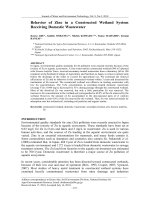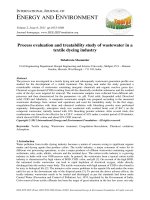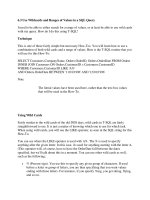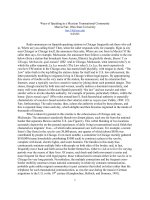Order of words in a sentence
Bạn đang xem bản rút gọn của tài liệu. Xem và tải ngay bản đầy đủ của tài liệu tại đây (12.49 KB, 1 trang )
Order of Words in a Sentence
To convey the intended meaning words must be arranged in the proper order in a sentence. The following is the
usual order of words in an English sentence.
Subject before the verb
The subject usually comes before the verb in an English sentence.
The dog bit the postman. (Subject – the dog, verb – bit, object – the postman)
The people rang the bell for joy.
Object after the verb
The object usually comes after the verb.
The King wears a crown. (Subject – the king, verb – wears, object – a crown)
The boy killed the spider. (Subject – the boy, verb – killed, object – the spider)
Indirect object before the direct object
If there are two objects, the indirect object usually comes before the direct object.
She told me a story. (Indirect object – me, direct object – story)
Lend me your ears. (Indirect object – me, direct object – your ears)
Attributive adjectives
Adjectives used attributively comes before the nouns they qualify.
The other day I saw a little clownwith a crooked nose.
King Francis was a hearty king and loved a royal sport.
When an adjective is used predicatively it comes after the noun.
The child is asleep.
Position of the adverb
The adverb is generally placed close to the word which it modifies.
He solved only two problems.
He never tells a lie.
He is a lazy boy.
Notes
When an adverb is intended to modify the sentence as a whole, it is placed at the beginning of a sentence.
Certainly he made a fool of himself.
Stay on top of your writing! Download our grammar guide from www.englishgrammar.org to stay up-to-date.
Powered by TCPDF (www.tcpdf.org)









